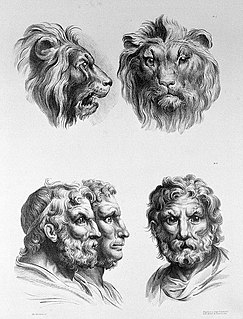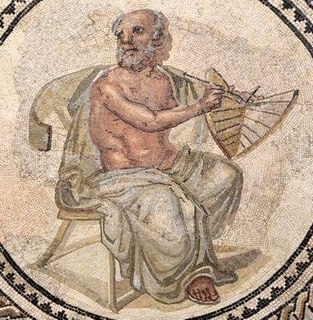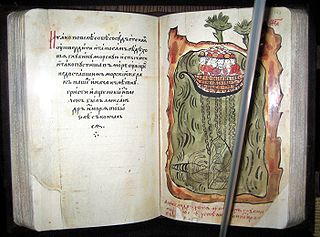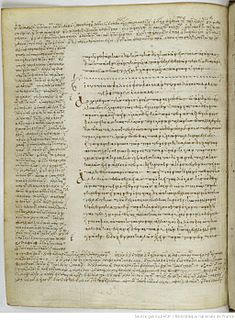Classical Mole Divination
Despite a cultural predeliction for physiognomy, which developed in a considerable literature, mole divination was not a major feature of Greco-Roman culture, and references to the practice are rare. Birthmarks enjoyed a somewhat higher status, and are mentioned. Seleucus I Nicator, the first Macedonian king of Syria, was said to have received from Apollo an anchor-shaped birthmark on his thigh, which was also borne by his descendants.

Physiognomy is a practice of assessing a person's character or personality from their outer appearance—especially the face. It is often linked to racial and sexual stereotyping. The term can also refer to the general appearance of a person, object, or terrain without reference to its implied characteristics—as in the physiognomy of an individual plant or of a plant community.

Seleucus I Nicator was one of the Diadochi. Having previously served as an infantry general under Alexander the Great, he eventually assumed the title of basileus and established the Seleucid Empire over much of the territory in the Near East which Alexander had conquered.
A short Greek manual of mole interpretation survives from antiquity, appended to the end of a much longer work on divination by twitches ascribed to the legendary Greek seer Melampus. Although the treatise on moles lacks an author, and differs in style from the work on twitches, it is customarily also referred to as by pseudo-Melampus. The text is titled Peri Elaion tou Somatos "On the Olives of the Body," the term presumably being applied to moles because of their similarity in shape and color. There are indications, however, that the text also covers birthmarks, as "fiery" red "olives" are mentioned.
In Greek mythology, Melampus, was a legendary soothsayer and healer, originally of Pylos, who ruled at Argos. He was the introducer of the worship of Dionysus, according to Herodotus, who asserted that his powers as a seer were derived from the Egyptians and that he could understand the language of animals. A number of pseudepigraphal works of divination were circulated in Classical and Hellenistic times under the name Melampus. According to Herodotus and Pausanias (vi.17.6), on the authority of Hesiod, his father was Amythaon, whose name implies the "ineffable" or "unspeakably great"; thus Melampus and his heirs were Amythaides of the "House of Amythaon".
In general, the work relies on fairly straightforward analogical association. A mark on the back of the throat portends beheading. One on the lips portends overeating. A mark on the nose—which the Greeks like many other cultures associated with the privates—portends the recipient will be "insatiate in lovemaking." Some distinctions are made between men and women, left and right.
A later Turkish translation of the Ps-Melampus text, ascribed to "Leo the Wise," was translated into French by Jean Nicolaides (Les Livres de Divination Traduits sur un Manuscrit Turc Inédit, 1889).

Anaximander was a pre-Socratic Greek philosopher who lived in Miletus, a city of Ionia. He belonged to the Milesian school and learned the teachings of his master Thales. He succeeded Thales and became the second master of that school where he counted Anaximenes and, arguably, Pythagoras amongst his pupils.
In Greek mythology, Polyidus, son of Coeranus, was a famous seer from Corinth.
In Greek mythology, Phemonoe was a Greek poet of the ante-Homeric period. She was said to have been the daughter of Apollo, his first priestess at Delphi, or of his possible son Delphus, and the inventor of the hexameter verses, a type of poetic metre. In some studies, attributed to the phrase "know thyself" found inscribed at the entrance to the Temple of Apollo at Delphi. Some writers seem to have placed her at Delos instead of Delphi; and Servius identifies her with the Cumaean Sibyl. The tradition which ascribed to her the invention of the hexameter, was by no means uniform; Pausanias, for example, as quoted above, calls her the first who used it, but in another passage he quotes an hexameter distich, which was ascribed to the Pleiades, who lived before Phemonoe: the traditions respecting the invention of the hexameter are collected by Fabricius. There were poems which went under the name of Phemonoe, like the old religious poems which were ascribed to Orpheus, Musaeus, and the other mythological bards. Melampus, for example, quotes from her in his book Peri Palmon Mantike §17, §18; and Pliny quotes from her respecting eagles and hawks, evidently from some book of augury, and perhaps from a work which is still extant in MS., entitled Orneosophium. There is an epigram of Antipater of Thessalonica, alluding to a statue of Phemonoe, dressed in a pharos.
In Greek mythology, Bias may refer to the following characters:
The Bibliotheca, also known as the Bibliotheca of Pseudo-Apollodorus, is a compendium of Greek myths and heroic legends, arranged in three books, generally dated to the first or second century AD.
Theon of Alexandria was a Greek scholar and mathematician who lived in Alexandria, Egypt. He edited and arranged Euclid's Elements and wrote commentaries on works by Euclid and Ptolemy. His daughter Hypatia also won fame as a mathematician.
In the Hebrew Bible, the Urim and the Thummim are elements of the hoshen, the breastplate worn by the High Priest attached to the ephod. They are connected with divination in general, and cleromancy in particular. Most scholars suspect that the phrase refers to a set of two objects used by the high priest to answer a question or reveal the will of God.
Pseudo-Philo is the name commonly used for the unknown, anonymous author of Biblical Antiquities. This text is also commonly known today under the Latin title Liber Antiquitatum Biblicarum, a title that is not found, per se, on the Latin manuscripts of Pseudo-Philo's Biblical Antiquities. Pseudo-Philo’s Biblical Antiquities is preserved today in 18 complete and 3 fragmentary Latin manuscripts that date between the eleventh and fifteenth centuries CE. In addition, portions of Pseudo-Philo's Biblical Antiquities parallel material also found in the Chronicles of Jerahmeel, a 14th century Hebrew composition. The Latin text of Pseudo-Philo’s Biblical Antiquities circulated in some Latin collections of writings by Philo of Alexandria. Scholars have long recognized the pseudonymous character of the text now known as Pseudo-Philo’s Biblical Antiquities. Primary in this regard is a vastly differing approach to and use of the Jewish Scriptures than that of Philo of Alexandria. For the sake of convenience and due to the lack of a better option, scholars continue to follow the lead of Philo scholar Leopold Cohn in calling the author “Pseudo-Philo.”
Artemidorus Daldianus or Ephesius was a professional diviner who lived in the 2nd century AD. He is known from an extant five-volume Greek work, the Oneirocritica or Oneirokritikon.

The Periplus of Pseudo-Scylax is an ancient Greek periplus describing the sea route around the Mediterranean and Black Sea. It probably dates from the mid-4th century BC, specifically the 330s, and was probably written at or near Athens. Its author is often included among the ranks of 'minor' Greek geographers. There is only one manuscript available, which postdates the original work by over 1500 years.

The Alexander Romance is an account of the life and exploits of Alexander the Great. Although constructed around a historical core, the romance is largely fictional. It was widely copied and translated, accruing legends and fantastical elements at different stages. The original version was composed in the Greek language before 338, when a Latin translation was made. Several late manuscripts attribute the work to Alexander's court historian Callisthenes, but the historical person died before Alexander and could not have written a full account of his life. The unknown author is still sometimes known as Pseudo-Callisthenes.
Pseudo-Plutarch is the conventional name given to the actual, but unknown, authors of a number of pseudepigrapha attributed to Plutarch but now known to have not been written by him.
The Erōtes, also known as the Amores or Affairs of the Heart, is a dialogue written in the Roman Empire in Ancient Greek. It is an example of contest literature, comparing the love of women and the love of boys, and concluding that the latter is preferable over the former. The dialogue is traditionally attributed to the satirist Lucian and was transmitted as part of the corpus of his writings. Some modern scholars believe that the dialogue was probably not written by Lucian on account of its style, but others—including among those who do not vouch for its authenticity—have posited that the style resembles that of Lucian. The work is normally cited under the name of Pseudo-Lucian. The Erōtes is also famous for its vivid description of the Cnidian Aphrodite of Praxiteles.
Pseudo-Abdias is the name formerly given to a collection of New Testament Apocrypha held by the Bibliothèque nationale de France and consisting of Latin translations in ten books containing several chapters. Each book describes the life of one of the Apostles.

Physiognomonics is an Ancient Greek treatise on physiognomy casually attributed to Aristotle but now believed to be by an author writing approximately 300 BC.
In Greek mythology, Amythaon was a son of Cretheus and Tyro and brother of Aeson and Pheres. He dwelt at Pylos in Messenia, and by Idomene, his niece, or by Aglaia became the father of Bias, Melampus, and Aeolia. His wife Idomene is sometimes said to be daughter of Abas, king of Argos. According to Pindar, he and several other members of his family went to Iolcus to intercede with Pelias on behalf of Jason. Pausanias mentions him among those to whom the restoration of the Olympic Games was ascribed. A part of Elis was thought to have been named Amythaonia after him.

The I Ching or Yi Jing, also known as Classic of Changes or Book of Changes, is an ancient Chinese divination text and the oldest of the Chinese classics. Possessing a history of more than two and a half millennia of commentary and interpretation, the I Ching is an influential text read throughout the world, providing inspiration to the worlds of religion, psychoanalysis, literature, and art. Originally a divination manual in the Western Zhou period (1000–750 BC), over the course of the Warring States period and early imperial period (500–200 BC) it was transformed into a cosmological text with a series of philosophical commentaries known as the "Ten Wings". After becoming part of the Five Classics in the 2nd century BC, the I Ching was the subject of scholarly commentary and the basis for divination practice for centuries across the Far East, and eventually took on an influential role in Western understanding of Eastern thought.

The Exhortation to the Greeks is an Ancient Greek Christian paraenetic or protreptic text in thirty-eight chapters.
In Greek mythology, Proetus was a king of Argos and Tiryns.












